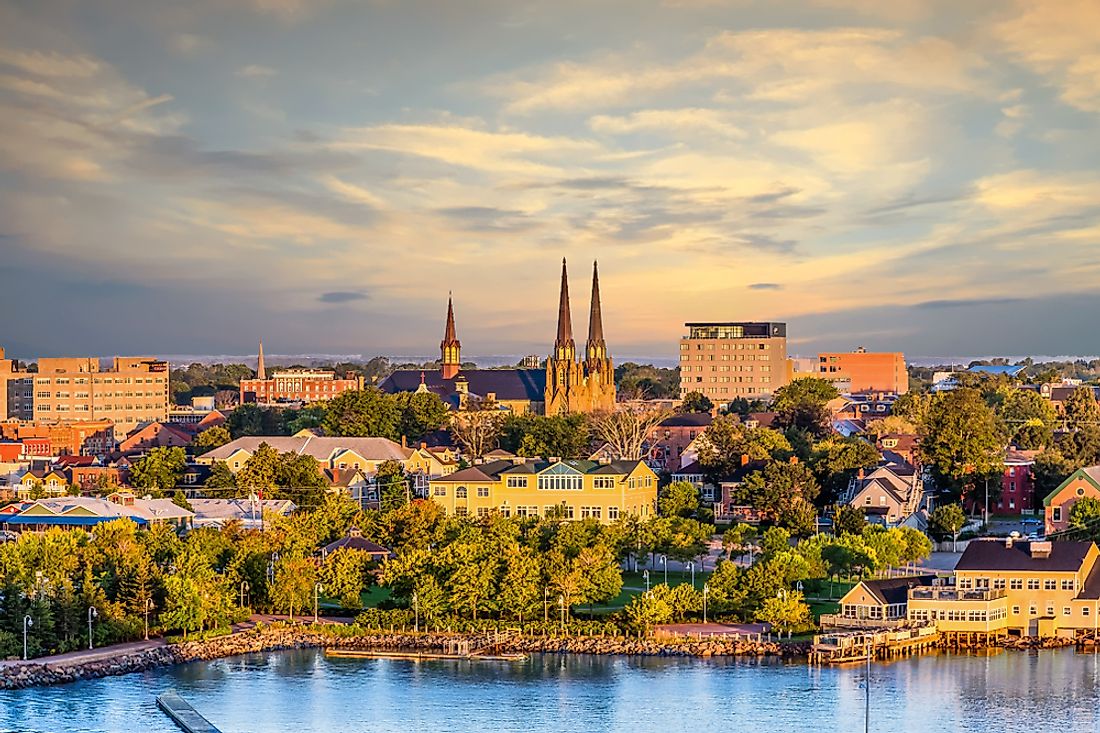Canadian Provinces and Territories by Population Density

Canada is the second largest country in the world after Russia. The North American state is made up of 10 provinces and three territories. Canada’s population density is highly skewed. About 80% of the population lives within 100 miles of the border with the United States. The four largest divisions (Nunavut, Quebec, Northwest Territories, and Ontario) cover 61% of the country while the most populous (Ontario, Quebec, British Columbia, and Alberta) account for 86% of the population. Yukon, Nunavut and Northwest Territories cover a third of the country but are inhabited by only 0.3 percent of the population. The national population density of 10.2/sq mi makes Canada one of the most sparsely inhabited countries, but the figure does not account for the skewness in population distribution. The following are the most densely populated Canadian provinces and territories.
Canadian Provinces and Territories by Population Density
Prince Edward Island
Prince Edward Island is the smallest division covering an estimated 2,190 sq mi or 0.1% of Canada. It is home to 155,000 people. The island’s population density of 65.4/sq mi (25.25/km2) makes it the most densely populated division of the country. Prince Edward Island is not the first choice for people seeking to start a new home, between 2011 and 2016 the population grew by only 1.9%.
Nova Scotia
Nova Scotia is the second smallest division after Prince Edward Island with an area of about 20,441 sq mi. It is inhabited by 965,000 people translating to a population density of about 45.2/sq mi (17.45/km2). The population of the province grew by 0.2% between 2011 and 2016.
Ontario
Ontario is the most populous Canadian division with an estimated population of 14.45 million. It is the fifth largest covering about 415,598 sq mi. Ontario’s population density stands at 37.9/sq mi (14.65/km2). Between 2011 and 2016 the population of the province grew by about 4% piling more pressure on the already overstretched resources
New Brunswick
New Brunswick is the only bilingual province in Canada with a population that is two-thirds Anglophone and a third Francophone. It is the third smallest Canadian division with an area of about 28,150 sq. New Brunswick has a population of about 773, 000 translating to a population density of 27.1/sq mi (10.46/km2).
Quebec
Quebec is the second most populous division in the country after Ontario with 8.4 million people representing 23.2 percent of the country’s population. It is also the second largest division after Nunavut with an area of 595,391 sq mi, translating to a population density of 15.5/sq mi (5 .98/km2).
The Least Densely Populated Territory
Nunavut is the largest, most northerly, and the newest Canadian territory. It was annexed from the Northwest Territories in April 1999. Nunavut covers about 787,155 sq mi representing 20.3% of Canadian territory but is inhabited by 38,800 people representing 0.01% of the Canadian population. Nunavut has a population density of 0.05/sq mi.
Canadian Provinces and Territories by Population Density
| Rank | Province/Territory | Population Density (People/Km Sq) |
|---|---|---|
| 1 | Prince Edward Island | 24.7 |
| 2 | Nova Scotia | 17.4 |
| 3 | Ontario | 14.1 |
| 4 | New Brunswick | 10.5 |
| 5 | Quebec | 5.8 |
| 6 | Alberta | 5.7 |
| 7 | British Columbia | 4.8 |
| 8 | Manitoba | 2.2 |
| 9 | Saskatchewan | 1.8 |
| 10 | Newfoundland and Labrador | 1.4 |
| 11 | Yukon | 0.1 |
| 12 | Northwest Territories | 0 |
| 13 | Nunavut | 0 |











